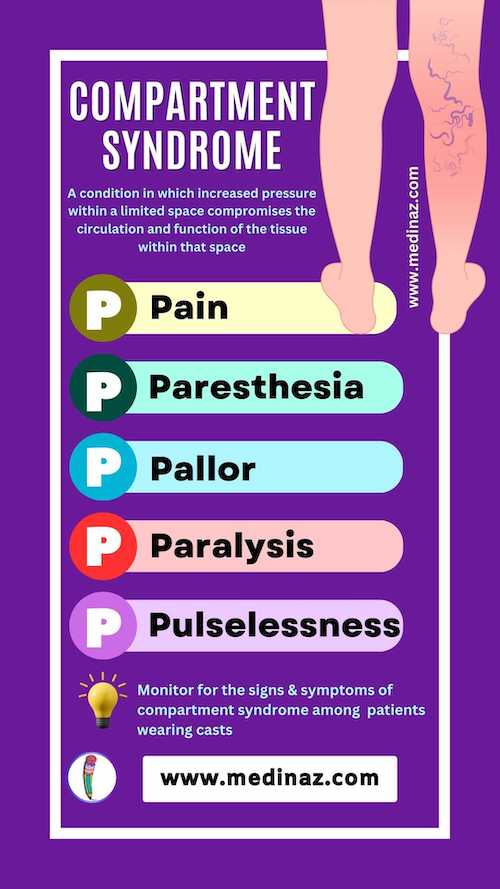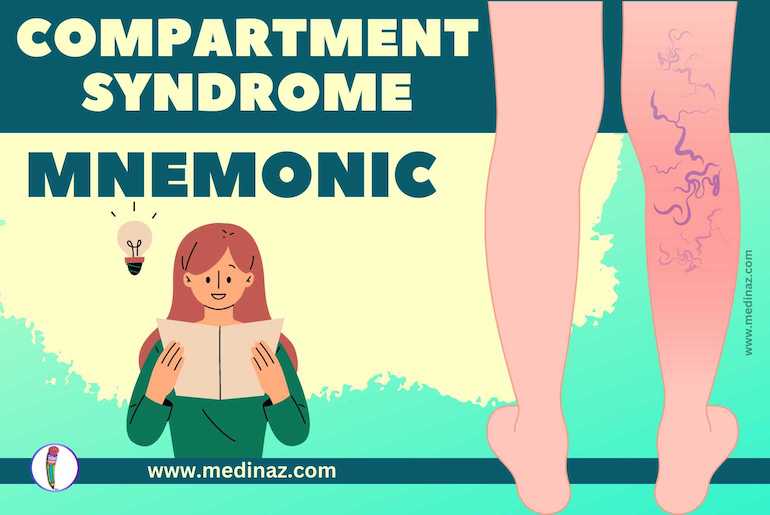Easy way to remember Compartment Syndrome features with this Compartment Syndrome 5p mnemonic
Compartment syndrome refers to a painful condition where pressure within the muscles reaches dangerous levels, leading to reduced blood flow, which in turn hampers the delivery of nourishment and oxygen to nerve and muscle cells. (ref)
This syndrome manifests in two forms:
- Acute compartment syndrome
- Chronic compartment syndrome
Acute compartment syndrome: It is characterized by intense symptoms over a short period and considered a medical emergency, often arising from severe injuries and causing significant pain and potential permanent muscle damage.
Chronic compartment syndrome: It is also known as exertional compartment syndrome, typically not an immediate medical emergency. The chronic version commonly arises from strenuous athletic activities and can be resolved through adequate rest.
Although compartment syndrome can occur in various parts of the body, our focus in this article lies on its manifestation in the lower leg.
Compartment Syndrome Mnemonic: 5P
P = Pain
P = Paresthesia
P = Pallor
P = Paralysis
P = Pulselessness

Symptoms:
Acute Compartment Syndrome:
- The primary symptom of acute compartment syndrome is severe pain, especially when the affected muscle is stretched.
- Pain surpasses what would typically be expected from the injury itself, and using or stretching the involved muscles intensifies the discomfort.
- Tingling or burning sensations (paresthesia) may be experienced in the skin.
- The affected muscle might feel tight or full.
- Late signs of compartment syndrome include numbness or paralysis, which often indicate permanent tissue damage.
Chronic (Exertional) Compartment Syndrome:
- Chronic compartment syndrome manifests as pain or cramping during exercise, with the pain subsiding upon cessation of activity. It commonly occurs in the leg.
- Additional symptoms may include numbness and difficulty moving the foot, sometimes with a sensation of the foot slapping downward while running.
- Visible muscle bulging can also be observed in some cases.
Check other Medinaz Visual Mnemonics
A Visual Learning Platform





